#drengir
Text
never posted these


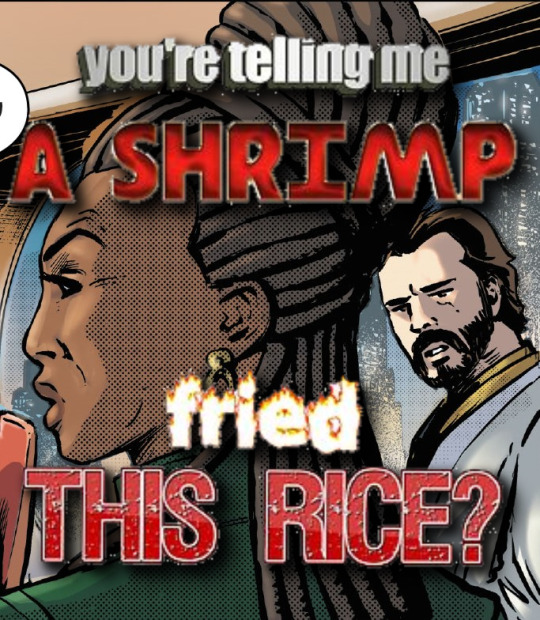

#star wars#the high republic#star wars the high republic#sw thr#thr#avon starros#imri cantaros#ghirra starros#vernestra rwoh#deva lompop#jay-6#galactic republic#honesty weft#xylan graf#zeen mrala#stellan gios#star wars memes#doctor mkampa#the high republic adventures#defy the storm#the nameless#nameless#drengir#the drengir#sw#the high republic memes
42 notes
·
View notes
Text



Feels like a long, long time has passed since this project began, but finally Star Wars The High Republic Character Encyclopedia is hitting the shelves and jam-packed full of familiar faces from the High Republic era of the Galaxy far, far away! My styling for this book evolved a little bit along the way, but I hope you'll agree, the finished results turned out great!
#chris gould#cgsketchbook.com#star wars#book design#publishing design#spread design#graphic design#star wars high republic#the high republic#high republic#stellan gios#drengir#maz kanata#dexter jettster
44 notes
·
View notes
Text

HAPPY MAY THE 4TH!
#star wars#sw memes#the high republic#grand master yoda#master yoda#yoda star wars#yoda#luke skywalker#nihil#drengir#star wars the high republic#happy may the 4th#may the 4th#may the 4th be with you
57 notes
·
View notes
Text

Keeve and Sskeer ambushed by a Drengir, for Star Wars: The High Republic: Chronicles of the Jedi by Cole Horton.
Editor: Harrison Tunggal, AD: Stuart Smith, additional art: Alberto Buscicchio
26 notes
·
View notes
Text

Orla baby u tried 🥲🥲🥲
#into the dark#claudia gray#the high republic#thr#star wars the high republic#cohmac vitus#orla jareni#drengir#reath silas#dez ryden#sw memes
41 notes
·
View notes
Text

iPad baby Thrawn (canon)
172 notes
·
View notes
Text
Finished into the dark! Unfortunately I didn't really like it. The characters themselves were more interesting than the plot, which I felt like wasn't utilized to its full potential. An abandoned space station with idols that are literally a lock and key on a super deep dark side of the Force that the Jedi accidentally release could have been more. Idk. Suspenseful? Scary? But the Drengir are just Plant People who can't really die.
#ch posts#i think maybe more of a horror/terror would have worked#i took me a while to resd this for various reasons#so maybe im not remembering quite correctly#but im not sure the Jedi themselves really felt that scared of the Drengir?#they faced it with the same resolve that they have lesser problems in other media#despite constantly interacting with something very deep in the dark side of the Force#also orla got her leg hurt but was still jumping around iirc
21 notes
·
View notes
Text
Recap, recording, and highlights from today's stream are up!
and just a tiny joke under the cut that I was very obnoxious about making on Discord when they were talking about the Corrupted Vorantikus fight:

#there's just a silly joke under the cut#that's all#if that one boss in the new flashpoint#isn't a proto-drengir#then i am totally headcanoning it as one#because it looks SO close#so depending on when it goes live on pts#might totally do a little stream (as a treat)#if only so i can re-enact that himym joke with the vorantikus boss#swtor 7.3
6 notes
·
View notes
Photo

@jedijune Day 7 - Symbols/Faith
"Tell me Jel’duje, what do you see?"
"Well Master, this is an example of Corellian Aestheticism. Looks like... the Battle of the Drengir during the High Republic?"
"Very astute, and all correct."
"But?"
"But what is it? What makes it worthy of the archives? How are the lives represented here worthy?"
Master Collpar and Padawan Jel’duje are undercover at an art show.
Tried to make the Republic symbol look like moss art.
#ketchup laser#kl draws#star wars#starwars#jedi june#jedi june 2022#jedijune#symbols#faith#republic#old republic#jedi#jedi master#Jolkai Collpar#padawan#Jel'duje#art#high republic#battle of the drengir#moss art#kuati#twi'lek
7 notes
·
View notes
Text
Star Wars comics read-through time but this time I finally got to The High Republic comics so instead of being Legends and from 20-10 something years ago they're only from 2 years ago
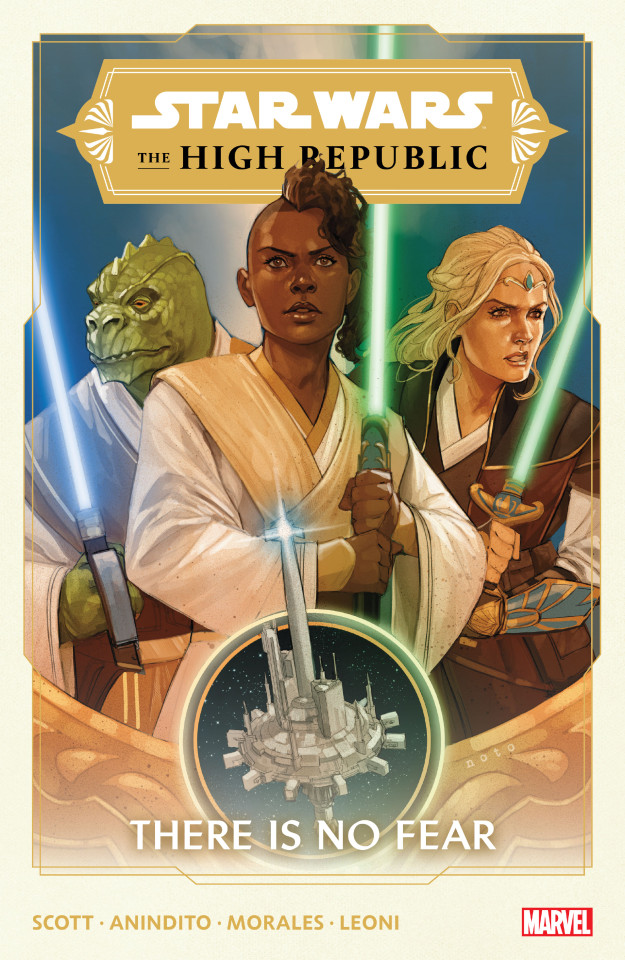
This is what I'll be discussing btw, highly recommended but you should read 3 books before you start it (Light of the Jedi, Into the Dark, A Test of Courage)

Keeve Trennis is so fucking cool why are women in Star Wars always perfect and can do no wrong
Also, her lightsaber is cool as hell I love the long hilt

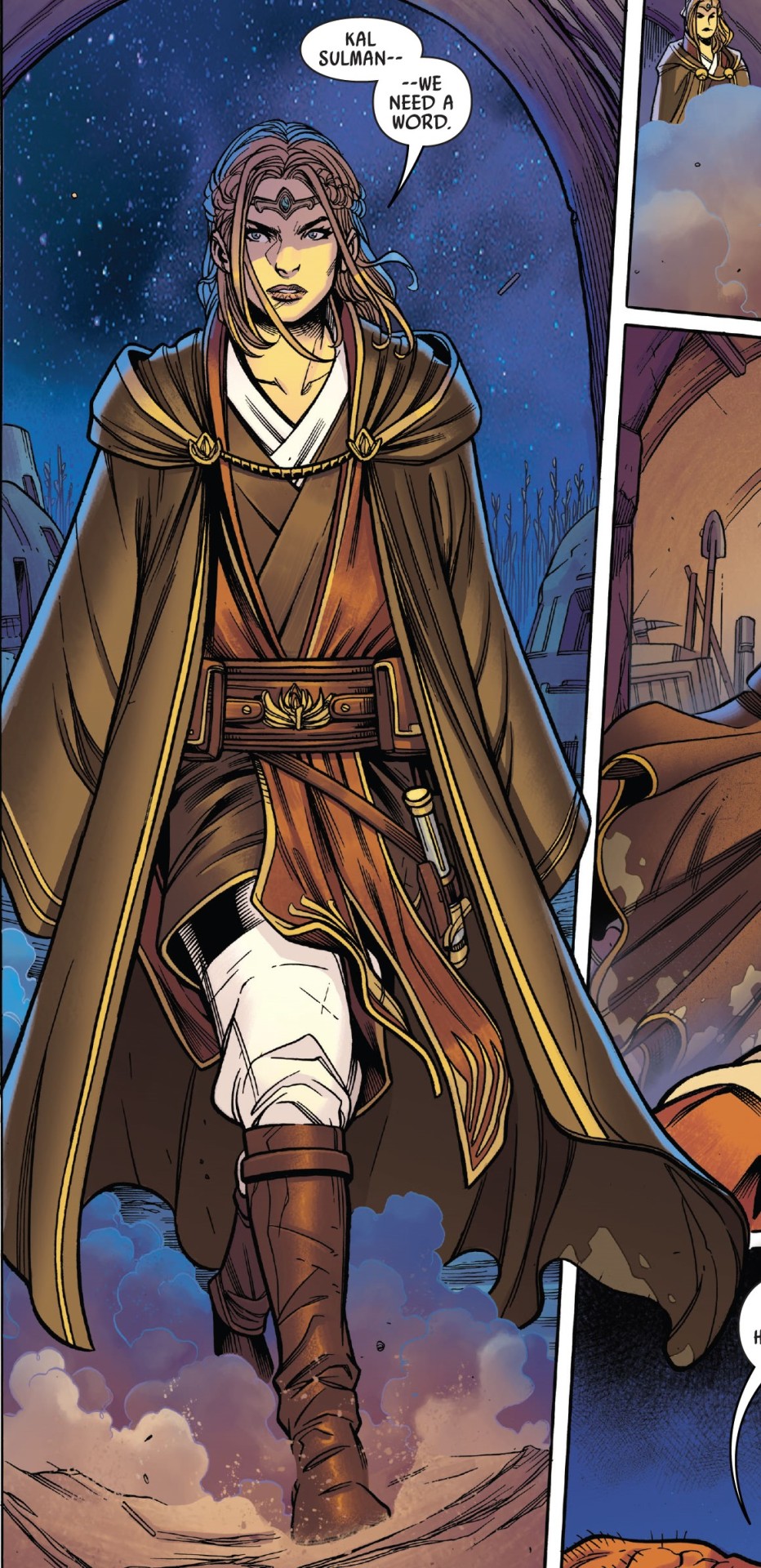
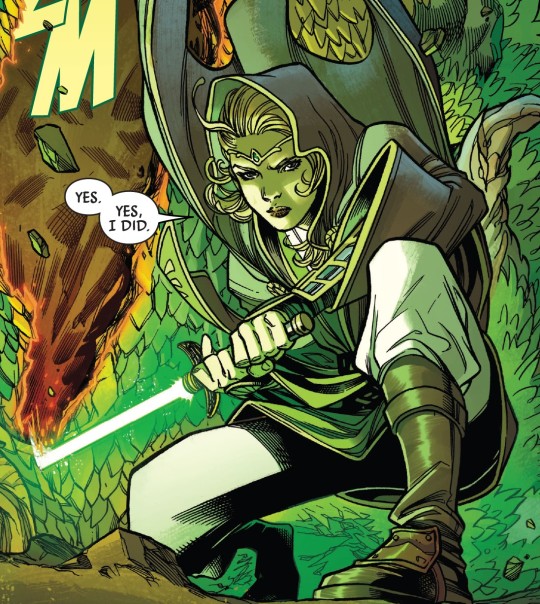


Favorite Avar Kriss panels to add to my previous point I need her

This was one of the very first pages and it's so stunning, this series started off strong and just kept on going, I love it
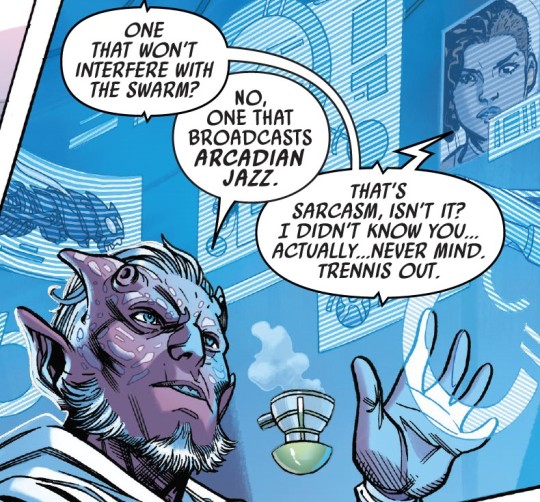
I know it's just one of the names but this is Jizz music erasure. Cowards.

Woah Keeve you are so me how'd you know this is what I would've said in that situation

Knighting! Hell yeah we love to see it

Ahhhh this book is so prettyyyyyyyyy and I love The High Republic so much already

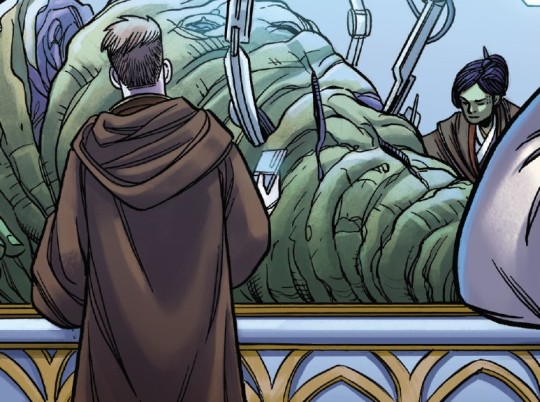
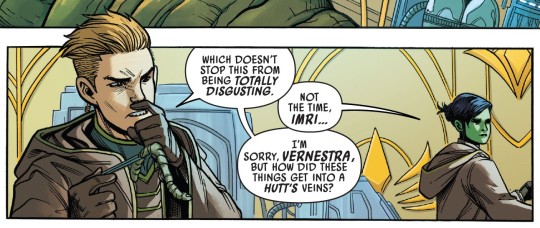
Had no idea Vernestra and Imri would be here but it makes me so happy they are
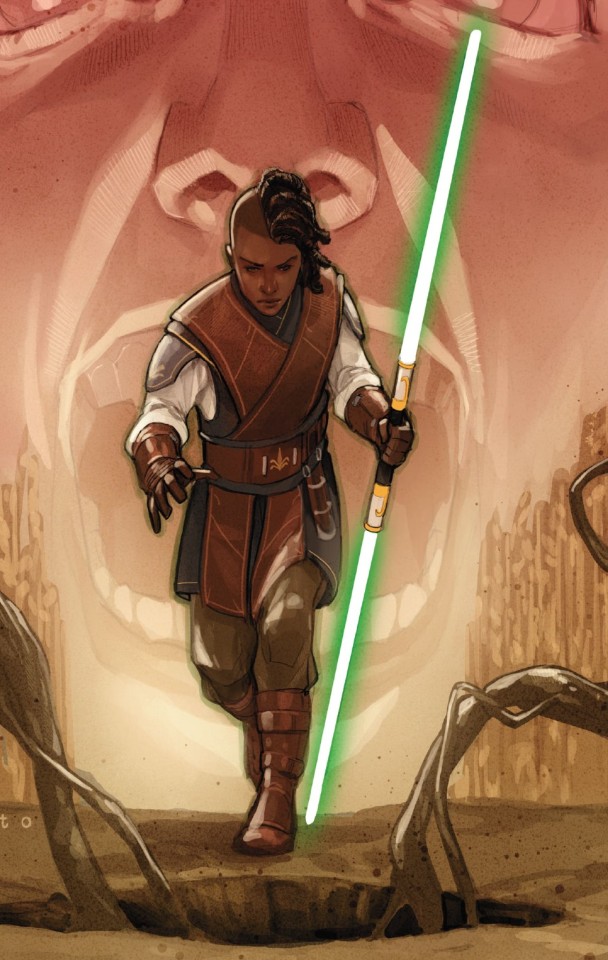
The covers for this are fucking amazing I wish Women were real
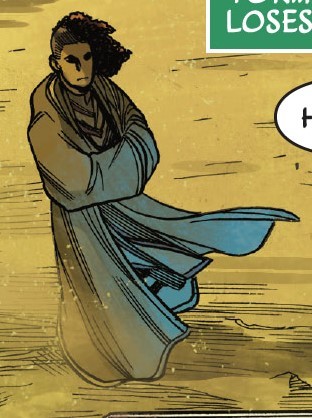
love it when Jedi are 90% cape 10/10 no notes
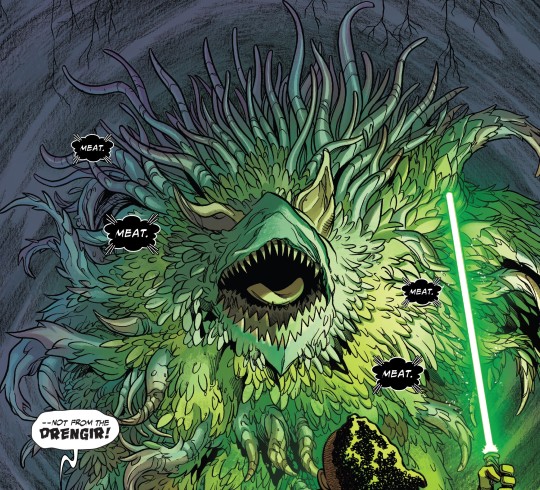
Oh fuck. Fuck. Maybe leaving throwing the Drengir into space asn't such a good idea was it Reath Silas
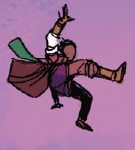

Tiny Keeves!
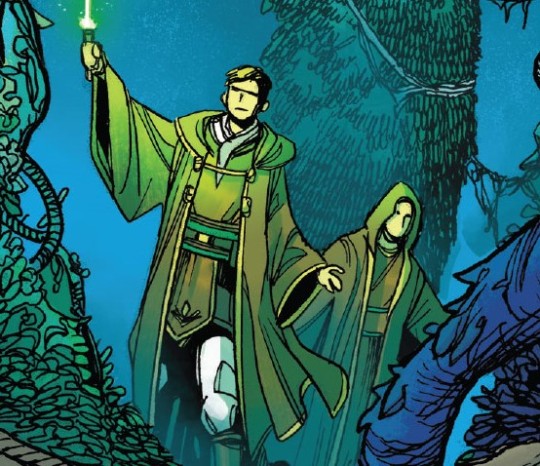
This is Reath but I'm not sure who the other one's supposed to be. Dez? It sure doesn't look like Cohmac or Orla

Jedi Jedi Jedi Jedi Jedi Jedi Jedi Jedi Jedi Jedi Jedi Jedi Jedi Jedi Jedi Jedi Jedi

(ง'̀-'́)ง
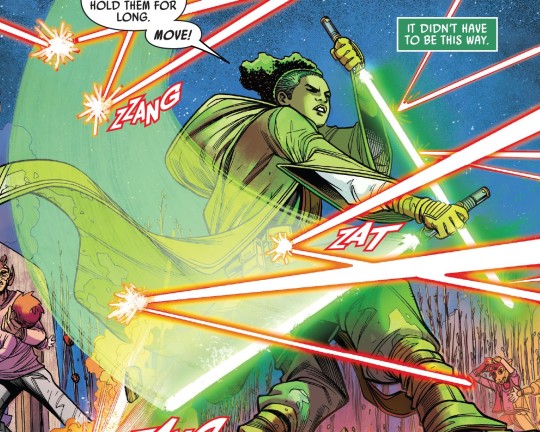
Ooooh her Lightsaber can be split into two that's so cool what a sick Asajj Ventress refren-
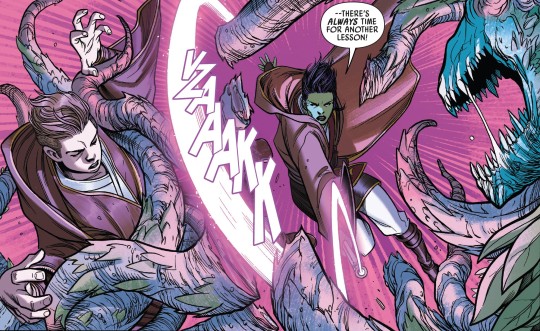
More Verenestra and Imri look at them!

Avar Kriss
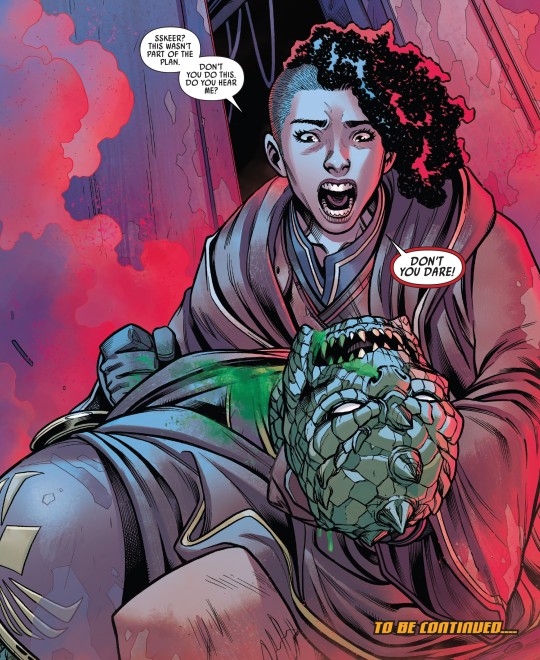
Well shit guess I have to read High Republic Adventures before continuing to Issue #6
Star Wars: The High Republic #1-5
#yael is reading star wars#long post#sw#star wars#the high republic#thr#sw thr#star wars the high republic#sskeer#keeve trennis#avar kriss#Estala maru#yoda#vernestra rwoh#imri Cantaros#drengir#reath silas#Terec#ceret#star wars comics#jedi#keeve is like. so gender#she also has a quinlan vibe to me idk why#she's great
47 notes
·
View notes
Text

Star Wars The High Republic Character Encyclopedia is only further enhanced in its awesomeness thanks to the beautiful cover art by the legendary Phil Noto, which I had the fantastic pleasure of commissioning for my cover design! Its a fabulous piece, filled to the brim with heroes and villains from the High Republic era - did your favourite make it on there?
#chris gould#cgsketchbook.com#star wars#book cover#book design#publishing design#graphic design#the high republic#high republic#star wars the high republic#phil noto#nameless#drengir#marchion ro#lourna dee#elzar mann#avar kriss#stellan gios#keeve trennis#bell zettifar#ember#avon starros#vildar mac#the mother#burryaga agaburry
4 notes
·
View notes
Text

#star wars#sw memes#the high republic#the high republic spoilers#star wars the high republic#star wars the high republic spoilers#race to the crashpoint tower#drengir#nihil
17 notes
·
View notes
Text
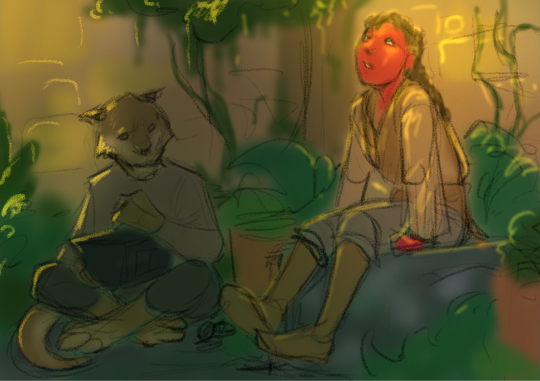
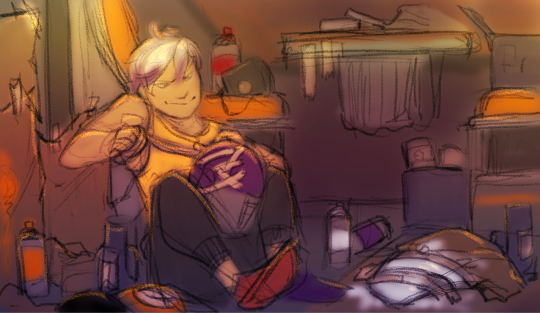


I am being very indecisive so, help.
66 notes
·
View notes
Text
It's time for the routine 2am character introspection beyond plausible design: Soma edition.
She wears clothes that cover everything except her neck, hands and face - pretty humble attire for a jarlskona. At some point during the two years prior to Eivor's arrival in England, Soma escaped her self-coordinated execution: death by burning pyre (re. Birna's longship tale). She was presumed dead for a night, so she would have waited a little bit before making her escape, long enough for the flames to obscure the rippling water. Logically, she would have burn scars from it.
Some details are missing from the story, but it sounds like she tricked the king of the South Gyrwans into giving her an excuse to kill him while also taking a bit of heat off her back. Morally questionable, considering there was no mention if King Roffe harboured any animosity towards her before. Possible justifications aside, this was cruel of her, and it isn't something you can picture her doing after Eivor finishes her quest line. Although it does allude to reasons why the entire country wanted her dead.
Scars, especially from daring and brave deeds, were worn with pride by the drengir. Soma could be hiding hers because the stunt she orchestrated was at best deceptive, at worst cowardly. After all, according to Birna, she yelled "Traitors of Soma wear no heads," yet Roffe did everything she asked him to. Perhaps she'd rather keep the origin of those scars buried alongside Roffe's headless corpse.
But she could literally burn down an orphanage and I'd beg her to [redacted] [redacted] [redacted] [redac-
19 notes
·
View notes
Note
i follow odin (NOT as a folkish/odinist freak, to be clear), which often feels like it raises some weird conflicts as a newbie anarchist. like, considering his whole. situation it seems likely that pops up there would happily accept cops, fash, etc. into valhalla, if only to pad out the troops, yknow? it doesn’t seem like he goes out of his way to only ghost-enlist good drengir or anything. you ever think about that? what’s your outlook on valhalla in general?
Yeah, you hit the nail on the head. There's a real contradiction here. A lot of people are going to have different ways of dealing with this, and yours might be different from mine, but I'll share what I can and maybe it'll help.
I guess I should be up-front and admit right away that I don't believe in Valhöll. And I'm glad I don't believe in it, because I also don't like it. I think it's better to just state that outright than to do what some heathens do and either reinterpret it until it's something that makes sense to them, but barely resembles any of the sources about it; or try to argue that "real" heathens didn't believe it themselves (surely, some did and some didn't). We're gonna have contradictions and differences with each other and with our predecessors because we have no centralized religious authorities, and this is all a good thing as long as we can be cool about it and respect difference.
Side note: while I personally don't think it's helpful to reinterpret Valhöll into a place where the downtrodden get rewarded for all their unseen and unappreciated struggles and sacrifices, I at least have more in common with a person who does believe that than with someone who actually believes in the Eddas' description of Valhöll and thinks that sounds good.
Disbelief doesn't get me out of needing to think about it, it just moves the problem. If what I believe is that it's a projection of the ideal life of the aristocratic warrior conqueror, I can disbelieve in Valhöll but still have to deal with the aristocratic warrior conqueror who was a historical reality. Obviously Valhöll is the one thing everyone "knows" about Old Norse culture and it completely dominates the discussion about afterlife concepts but let's think about why that is. Our main sources of information about the mythology at all were produced by the same group of people that Valhöll was most relevant to: the warrior aristocrats who laid the groundwork to establish the kingdom of Norway. The whole thing is an extension and idealization of their way of life, running on magic rather than the slaves, farmers, other workers, and women with rare exception, whose work was needed to keep the aristocracy afloat here in the living world. We don't get nearly the same volume of myth that might have been more relevant to those slaves, farmers, other workers, and women. As much as that sucks and isn't fair to either them or us, it's the reality, and we're better off accounting for that absence than ignoring it.
I don't actually think someone consciously invented Valhöll, I think one root of it is extrapolation from an idea we see elsewhere, that a person's experience following death is somehow continuous with the manner in which they died. So someone who drowns in a shipwreck has an afterlife in the sea; Hel might be characterized by illness and famine because those are ways that a lot of people get there. I expect that the idea of Valhöll started out the same way, that people who died in violent conflict remained in violent conflict after their deaths. In that case it isn't inherently a reward or punishment, and its later glorification comes about because the tradition passed through many people who glorified violence. I also think that a lot of what we think we know about it was actually embellished in retrospect by the Christian descendants of these people, and was probably done in such a way as to exaggerate the manly valor of anyone who would consider being hacked to death every day until the end of time a sort of "heaven." But we also shouldn't rule out the possibility that heathens themselves developed it as they developed their own identity in contrast to Christianity.
But once it emerged into the ecosystem of spiritual beliefs it probably served a bunch of needs that would have solidified its position. As many have pointed out, it probably helped people deal with the fact that they'd never see their dead children or even be able to give them a proper funeral in accordance with whatever their local custom was, including offering grave goods and putting the remains with the rest of the family, or somewhere accessible in the landscape. The aspect I've usually emphasized is that it was probably extremely useful for warlords who needed to convince children to die for them. Around the turn of the millennium it may have become more relevant to make promises of a good afterlife, as Scandinavians became increasingly aware of what Christianity was offering. Indeed, since we get some indications that some Norse people believed in reincarnation, this might be the time period where the concept of the afterlife being permanent consolidated.
Fortunately we do actually get an alternative view of something very similar, but from people embodying a different ethic. Þórólfr Mostrarskegg was a wealthy and powerful aristocrat known for his generosity in Norway during the time that Haraldr fairhair, the semi-legendary first king of Norway (and a central figure for the warrior-aristocratic context we're examining), was expanding his empire. Þórólfr harbored a fugitive (Björn Ketilsson) who had been declared an outlaw by Haraldr, and as a result had to flee Norway himself, choosing to uproot his own life and lose a great deal of his wealth and power rather than fail to offer aid to a fugitive. Þórólfr and his entire homestead fled to Iceland. He was kind of an over-the-top blowhard but continued to be known for his generosity. His son Þorsteinn took over the farm when he died and took after his father. It isn't specified that Þorsteinn had a specific habit of freeing slaves, but it is said that he had a retinue of some 60 freedmen. When Þorsteinn died, a shepherd saw the mountain Helgafell ('holy-mountain'), near Þorsteinn's farm, open up to reveal a huge feast and celebration happening inside, and he saw that Þorsteinn and his comrades who had died with him were going to go sit down across from his father Þórólfr. To be clear, these guys were still aristocrats. The ability to free slaves means they also had the power not to, and I don't want to romanticize these guys. But they still rejected violent conquest and chose personal loss for the good of others, and the afterlives they're depicted as having (basically Valhöll but connected to the land they lived in, and without all the violence and weird class elements) is surely related to that. This is all part of Eyrbyggja saga (no, it may not be reliable historical fact, but it is how they were remembered, which is important for its own reasons).
So I guess the reason I'm bringing this up is that we're all pretty good at reminding each other "there were a variety of beliefs" but we don't always have an opportunity to examine what they actually were, and what there position was in an ecosystem of beliefs, symbolic power, social values, political conflict, etc.; or why some of those beliefs were more likely to be written down, copied, and selected as important by later authors.
There's also a contradiction here, because Þorsteinn drowned while fishing. If Norse people all had the same concept of an afterlife, he should have gone to Rán in the afterlife, but they didn't all believe the same stuff. There's also one thing about these guys that might make the example less helpful -- in case you couldn't figure it out from their names, they were super into Thor specifically. We don't get a lot of examples of regular people who worshiped Odin, he wasn't big among the people who went to Iceland whose experiences were written about by their descendants. If we had something like the Icelandic sagas but for Denmark, maybe we'd have a broader and more nuanced understanding of these things.
I guess to summarize the main point I'm trying to make so far is that we don't need to turn off the criticism for something just because it's projected into the realm of the supernatural or afterlife or whatever, considering that the actual once-living people those ideas come from are subject to that criticism. Heathens have a really bad habit of acting like they believe there was, like, a cohesive Old Norse Religion and if we're to belong to it than we're handed a predetermined package of beliefs, and a lot of the arguments and discourse are about what's in that package. But that just isn't true. A lot of the lore we have has more to do with regional rulers trying to one-up each other, which generates change and innovation rather than being a witness to what came before them. And some of it is even shrouded in the same fake conservatism, the same "back in the good old days when [thing that never happened]" that we still have today. I have a lot of other thoughts about Valhöll so if any of this is confusing or if it would help to go deeper on something I've said, let me know, but this is getting unwieldy now.
I think there's more to be said about what an anarchist is to make of Odin in general (in addition to what I've already said), but my thoughts on that are less cohesive and I've come to fewer conclusions. In some cases we may be better off sitting with those contradictions than trying to resolve them. One thing I'll offer is that I think that when the gods do unambiguously bad, twisted shit in myths it's because it's supposed to hurt. Like, I think it's supposed to feel like when you yourself think about a time when you've done something fucked up and repeatedly ask yourself why you did it or why you can't go back and do it different, because the only way to give those moments any kind of meaning is to be transformed by them into something better than you previously were. Some of Hávamál is even explicitly framed as hoping the audience will learn from Odin's own fuckups (Háv 11-13: "Don't drink too much"; Háv 13-14: "There was this one time when I drank too much...").
I tend to interpret the Ragnarök story as being about how allowing the breakdown of communal relations based in mutual respect and solidarity, in favor of personal advantage or even out of a sense of duty, inevitably leads to total system collapse, ensuring that any "victory" is Pyrrhic; and about how literally having this spelled out for people won't necessarily prevent them from rushing headlong into it even in their attempts to avoid it. IMO, it's a mythic playing out of ideas and emotions that pertain to living in a blood-feud culture, where honor fuels an engine of ever-escalating violence that leaves no room for anything but tragedy on every side, often in the name of "doing the right thing." (incidentally, the Haudenosaunee Great Law of Peace is the product of peoples who grappled with the same problem, but actually made it out to the other side). If that's true, then not only does Norse mythology not present a single, coherent, monolithic religion; it actually contains within it, along with lot of other, sometimes conflicting things, a desperate grasping toward something better, and any modern person whose identity is formed in relation to them is also taking on a responsibility of carrying that on. Anyway I'm definitely in the weeds now so I better stop but the stuff I've described in this paragraph is kind of constantly running in the background whenever I read about Odin as a narrative figure and is the more religiously interpretive side of why I can't with any einherjar=good.
172 notes
·
View notes
Text
I’ve just had a recent dream regarding Tech, he was wearing a dark grey uniform of an imperial scientist with rank bar denoting his status as Imperial Commander and Science Officer. He was calmly adjusting his glasses as he typed out scientific diagrams regarding contraptions of any kind. This only fuels my plans to expand my Imperial Tech au! Once his chip activates. He’ll be more logically harsh in addition to being practical, cold, calculated, determined, firm, stern, serious, cunning, businesslike, persuasive, brutally honest, reasonable, brutally honest.
as such. The Amaxines, The Drengir are also involved in my Imperial Tech AU as is Phee Genoa. Case Solving is also included!
Not only that, I’ve recently dreamt Tech was giving new recruits for the Imperial Science Division a tour of his massive lab on Mt. Tantiss in addition to the others on Coruscant and Ziost!
#Tech is logically harsh#Imperial!Tech#original characters#Imperial Tech#Imperial Force 99#The Bad Batch ‘rejoin’ the empire and play the long game#Imperial Surveillance Division#RC-1262 “Scorch”#RC-1140 “Fixer”#High Republic references#Imperial Scientists#Science Shenanigans#Cloning Experiments#CT-9902 ‘“Tech” ‘s Imperial Labs#Darth Vader#Tech is a Chief Lieutenant Weapons Scientist for the Empire!#Imperial Military Research Bureau#Star Wars Dark Droids#What If AU#Tech’s Chip Activates instead of Crosshair’s#Chilling Stories#Imperial Tech is Intimidating and Menacing#Tech takes over Mount Tantiss after offing Royce Hemlock#Rampart#Mas Amedda#Sly Moore#Wulff Yularen#Barton Coburn#Death Star#Imperial Science Division
13 notes
·
View notes